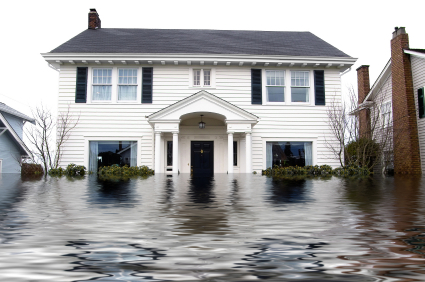Written by: Ron Gillaspie
 For Shore-area residents dealing with the aftermath of the damage from superstorm Sandy, the recovery process has been both prolonged and expensive. Now, for many coastal property owners, flood insurance premiums are rising. There are complex flood insurance changes on the way; however, there also are multiple positive developments under way. In particular, the entrance of private insurance companies into the flood insurance marketplace will likely bring less expensive flood insurance options.
For Shore-area residents dealing with the aftermath of the damage from superstorm Sandy, the recovery process has been both prolonged and expensive. Now, for many coastal property owners, flood insurance premiums are rising. There are complex flood insurance changes on the way; however, there also are multiple positive developments under way. In particular, the entrance of private insurance companies into the flood insurance marketplace will likely bring less expensive flood insurance options.
The many changes with the National Flood Insurance Program (NFIP) are not directly related to Sandy, but are the culmination of decades of increased flooding throughout the United States, along with an archaic premium rating formula. NFIP has initiated multiple corrective actions, which became effective April 1, to alleviate the $25 billion accumulated shortfall in the NFIP.
The program was started 50 years ago to assist coastal and inland property owners in protecting their assets against flood threats. The NFIP has not kept up with the dynamics of rising water, increased flooding and the need to offer a comprehensive insurance plan to address the growing risk and increasing fiscal deficit.
In 2012, the federal Biggert Waters legislation was passed, which was intended to address the deficient rate and premiums within the NFIP Program. It included aggressive re-mapping of flood zones along with the elimination of subsidies for homes built prior to 1974.
Upon intensive opposition from the public and further evaluation, however, it was determined that Biggert Waters would potentially economically devastate many flood prone areas. The premium increases under the Act would become unaffordable, potentially forcing property owners to sell their properties which would have caused severe economic setbacks to neighborhoods, towns and entire regions throughout the United States. Biggert Waters proposed premium changes would have increased premiums by up to 1,000 percent in certain areas.
In turn, the Biggert Waters was amended and effective April 1, a more moderate rate correction methodology, the Homeowner Flood Insurance Affordability Act, was passed. Even with the more gradual rating changes, property owners are now seeing the following changes:
•Premium rate increases of 10 to 25 percent on each policy.
•A $25 surcharge on each policy on primary home.
•A $250 surcharge on secondary homes and businesses.
•Repeal of some of the grandfathered pre-FIRM subsidies.
Additionally, further re-mapping of flood zones will be implemented over the next one to three years. Congress hopes to gradually reduce the number of subsidized NFIP policies until the total premium pool is adequate to support the aggregated flood losses. The entire process of right-sizing the premiums to adequately cover claims costs and eliminate the deficit will take more than 10 years.
With rates rising and the substantial number of flood-damaged properties through the U.S. being lifted and rebuilt to more elevated levels, the NFIP flood premium deficiencies should begin to level off. Thirty thousand dollars in grant money is available within flood policies, called the Increased Cost of Compliance (ICC), to lift properties. Property owners should take advantage of this resource to improve their flood rating and lower their premiums and eliminate the risk of flooding.
Another very positive development is under way. The NFIP is encouraging private insurance companies to enter the flood marketplace. These companies must provide the same or better coverage terms than those offered by NFIP, but they can utilize their own rate structure. Several new insurance companies have already entered the flood market, with more on the way. The new flood carriers are utilizing lower rates and premiums in many areas than those offered by NFIP.
Competition will yield positive results for New Jersey and U.S. property owners. Additionally, the policy forms will be broader, which will allow property owners to protect against larger losses with better coverage terms. Both current and new flood insurance buyers should work closely with a flood insurance expert to be sure that their flood premium is properly rated. This includes correct interpretation and use of elevation certificates, along with overall knowledge of the changing rules, rating and carrier option.
The flood insurance market is in a state of transformation. With proper guidance, consumers will be able to make educated flood insurance and risk mitigation decisions to both reduce the potential of flood damage and lower their flood insurance premiums.
Ron Gillaspie is executive vice president and chief operating officer of Boynton & Boynton, a Fair Haven-based insurance agency.
This article was originally printed in the Asbury Park Press, and was also posted online on APP.com
